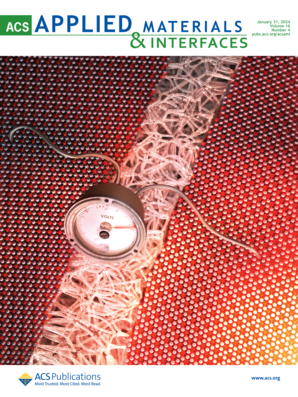羟基磷灰石增强的抗感染CoCrMo-3Cu承载种植体。
IF 8.2
2区 材料科学
Q1 MATERIALS SCIENCE, MULTIDISCIPLINARY
引用次数: 0
摘要
CoCrMo(钴铬钼,CCM)合金为承重植入物的关节表面提供了优异的耐磨性。然而,致癌的钴离子可能在关节过程中在体内释放。细菌感染和种植体表面的生物膜形成也是导致种植体失败的因素。全身或局部抗生素通常对这种细菌感染无效。当然,有必要设计出一种合金,既能表现出固有的细菌抗性,又能将钴离子的释放降到最低。这项研究使用了一种潜在的生物医学合金,铜(Cu)具有固有的细菌抗性,羟基磷灰石(HA)陶瓷通过形成固体润滑摩擦膜来增强耐磨性。采用激光定向能沉积(L-DED)增材制造(AM)技术对CCM、CCM- 3cu、CCM- 3cu - 1ha和CCM- 3cu - 2ha进行加工。使用革兰氏阴性细菌铜绿假单胞菌(Pseudomonas aeruginosa)对48和72 h的抗菌效果进行了评估。在5和10 N负载下,在生理学相关的Dulbecco's Modified Eagle培养基(DMEM)中进行了广泛的摩擦腐蚀研究,并进行了微观结构分析。铜表现出增强的耐细菌性,HA的加入提高了耐磨性,同时也减少了钴离子的释放。CCM- 3cu - 2ha的耐磨性比CCM提高了6倍。这些结果表明,ha增强的CCM-3Cu合金有望用于承载植入物的关节面。本文章由计算机程序翻译,如有差异,请以英文原文为准。
Hydroxyapatite-Reinforced, Infection-Resistant CoCrMo-3Cu for Load-Bearing Implants.
CoCrMo (Cobalt-Chromium-Molybdenum, CCM) alloys offer excellent wear resistance for the articulating surfaces of load-bearing implants. However, cancer-causing cobalt ions may be released in vivo during articulation. Bacterial infection and biofilm formation on the implant surface are also contributing factors to the failure of these implants. Systemic or localized antibiotics are often not effective against such bacterial infections. Naturally, there is a need to design alloys that show inherent bacterial resistance with minimal release of cobalt ions. This study uses a potential biomedical alloy with copper (Cu) to provide inherent bacterial resistance and hydroxyapatite (HA) ceramic to enhance wear resistance by forming a solid lubricating tribofilm. CCM, CCM-3Cu, CCM-3Cu-1HA, and CCM-3Cu-2HA were processed using a laser-based directed energy deposition (L-DED) additive manufacturing (AM) technique. Antibacterial efficacy was evaluated using Pseudomonas aeruginosa, a Gram-negative bacterium, over 48 and 72 h. An extensive tribocorrosion study was conducted in physiologically relevant Dulbecco's Modified Eagle Medium (DMEM) at loads of 5 and 10 N, accompanied by microstructural analysis. Copper exhibits enhanced bacterial resistance, and the addition of HA improves wear resistance while also decreasing cobalt ion release. The wear resistance of CCM-3Cu-2HA showed a 6-fold improvement compared to CCM. These results indicate that HA-reinforced CCM-3Cu alloys are promising for the articulating surfaces of load-bearing implants.
求助全文
通过发布文献求助,成功后即可免费获取论文全文。
去求助
来源期刊

ACS Applied Materials & Interfaces
工程技术-材料科学:综合
CiteScore
16.00
自引率
6.30%
发文量
4978
审稿时长
1.8 months
期刊介绍:
ACS Applied Materials & Interfaces is a leading interdisciplinary journal that brings together chemists, engineers, physicists, and biologists to explore the development and utilization of newly-discovered materials and interfacial processes for specific applications. Our journal has experienced remarkable growth since its establishment in 2009, both in terms of the number of articles published and the impact of the research showcased. We are proud to foster a truly global community, with the majority of published articles originating from outside the United States, reflecting the rapid growth of applied research worldwide.
 求助内容:
求助内容: 应助结果提醒方式:
应助结果提醒方式:


